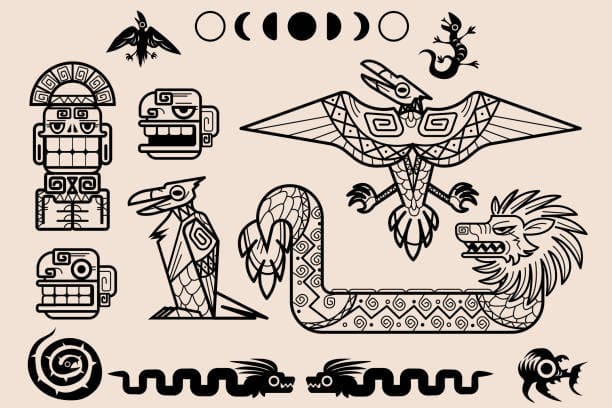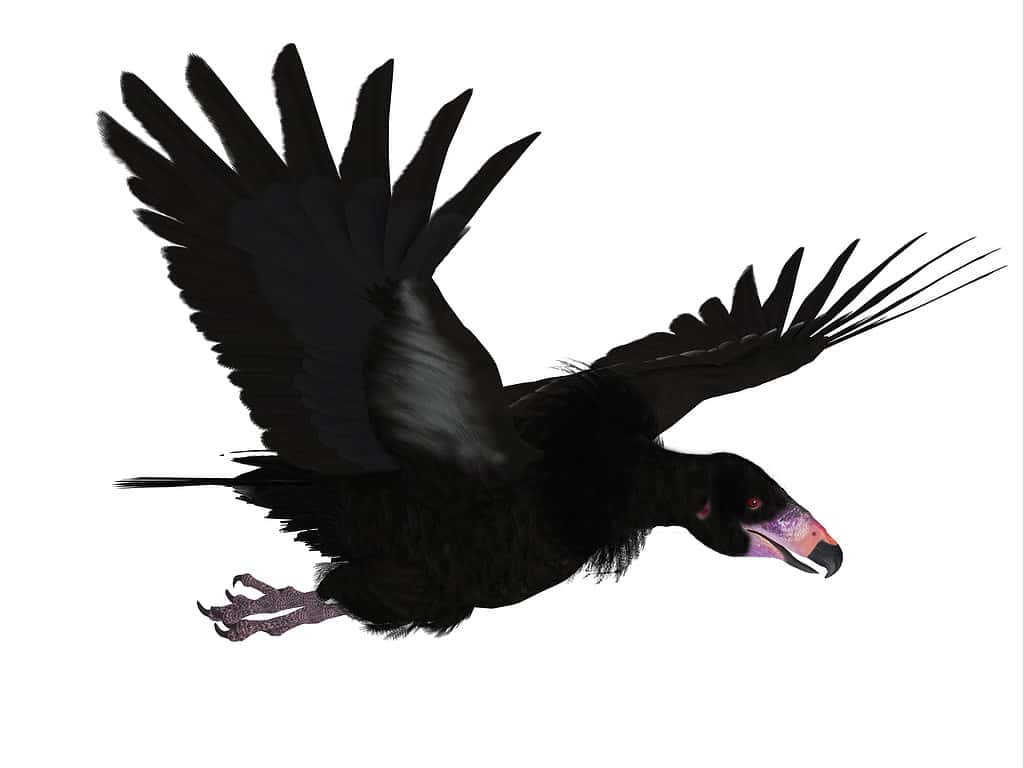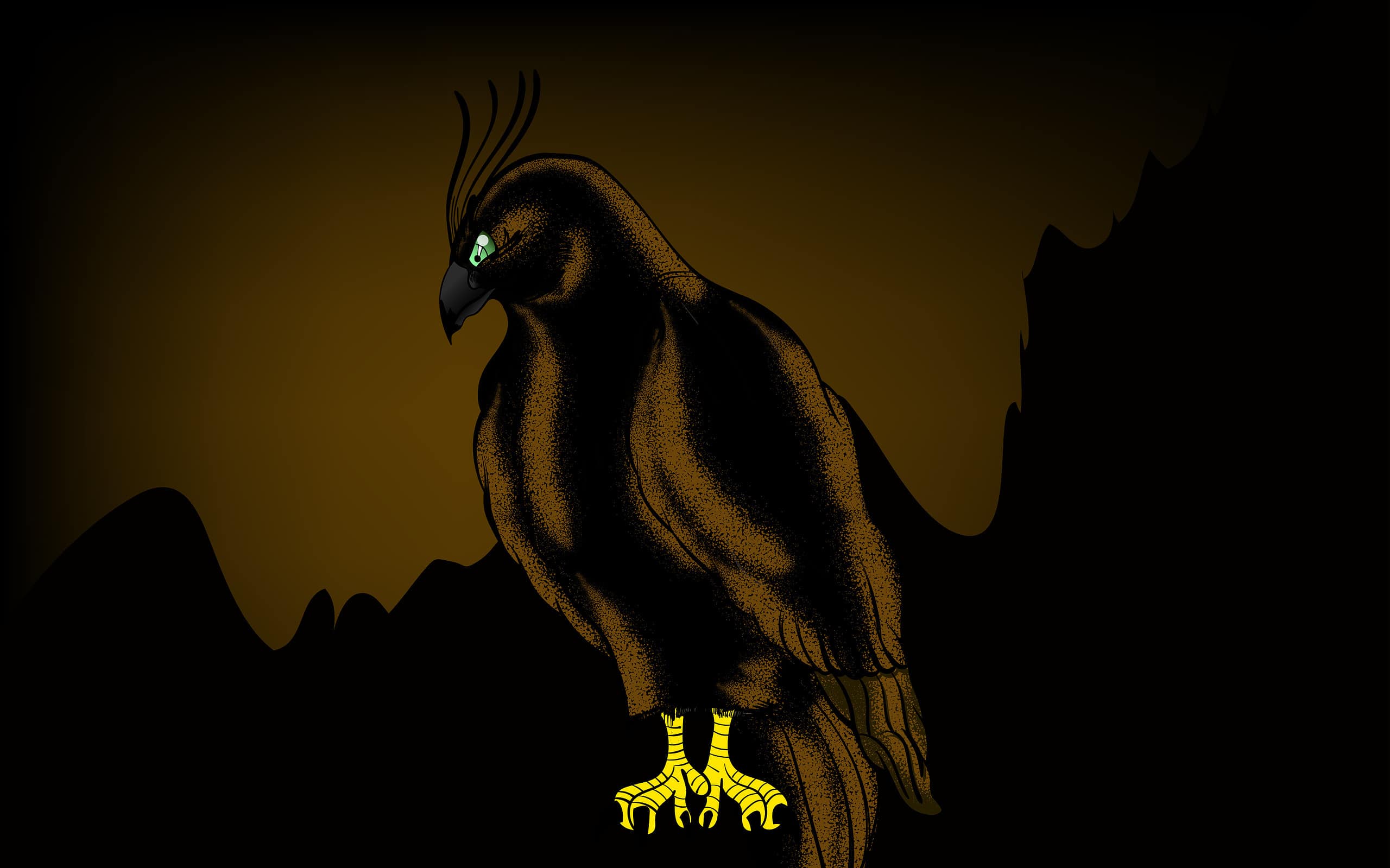From dragons in China to Minotaur in Greece, the one thing all cultures have in common are their outstanding creatures. While some are good and others are bad, they are all interesting nonetheless! Beyond that, Native American mythology is known to have the most fantastical creatures. Their legends and indigenous folklore are filled with a plethora of diverse, eye-catching beings, like the Arizona thunderbird. This is mainly due to the fact that animals are used to communicate different key values and spiritual beliefs.
While not all of them are welcoming creatures, they all serve a critical role in shaping indigenous culture. To continue, one of the most popular creatures in Native American mythology is the thunderbird. Explore all there is to know about this ancient cryptid, from where the Arizona thunderbird comes from to what it looks like.
Origin of This Cryptid?

©klyaksun/Shutterstock.com
First, let’s explore the origins of the Native American thunderbird. To start, this creature predates European colonization and has deep roots in ancient Native American culture. Some of the first stories involving this cryptid dates back to the Ojibwe tribe in early 1250 CE. While its exact origin remains unknown, experts speculate thunderbirds might have been based on a real bird that coexisted with humans during the Pleistocene period. Cryptozoologists also compare thunderbirds to prehistoric pterodactyls! Beyond that, many other Native American tribes told stories of the thunderbird. This includes the Tlingit and Pawnee tribes, and a handful of other tribes spread out over the United States.
Tales of this massive creature have been passed down from generation to generation through oral storytelling traditions. Besides that, native artwork, totem poles, sculptures, and ceremonial practices have also contributed to these creatures’ continued existence over time. Today, the thunderbird’s popularity has extended far beyond the Native American communities it started out in. You can find literature, movies, and TV shows all explaining tales of this mystical thunderbird creature. This massive beast has also captured the attention of cryptozoologists worldwide, which has greatly influenced their popularity in modern society. Furthermore, present-day sightings and encounters with giant bird-like creatures resembling the thunderbird continue to be reported, adding to the ongoing intrigue surrounding this cryptid!
What Do Thunderbirds Look Like?

The Arizona thunderbird is an enormous, legendary creature sourced from Native American culture.
©CoreyFord/iStock / Getty Images Plus via Getty Images
While the exact physical description of a thunderbird is still relatively unknown, alleged sightings often describe them as massive vultures, condors, eagles, or hawks. They usually have dark feathers and long, sharp talons. Some thunderbirds also have a white ring of feathers around their necks or white-colored heads, similar to bald eagles. Most notably, their wingspans are said to be absolutely massive, exceeding lengths of over 70 feet across! As per native folklore, thunderbirds also have unique supernatural abilities, since they are frequently depicted with lightning bolts or other storm-related qualities. Moreover, it is said the flapping of their wings has the power to cause thunderstorms, and their feathers shimmer with mesmerizing, cloud-like patterns.
Folklore and the Truth Hidden Within Them

Haida-style totem pattern depicting a thunderbird.
©artefy/iStock / Getty Images Plus via Getty Images
Thunderbirds are thought to be benevolent creatures, typically spotted high in the mountains or souring over coastal waters. The Objibwe tribe explained that this cryptid was created by Nanabozho — the Native American God of Earth and Fire — to fight underwater spirits. This lore further explains why thunderbirds allegedly prey on whales and other large sea creatures. Alternatively, some tribes say thunderbirds were sent to punish humans who broke moral rules. According to myths from the Tlingit tribe, the thunderbird was actually a god in animal form. In this rendition, this massive bird earned its name as a result of the thunderous sound its wings made during flight. As the story goes, this sound was meant to scare humans — and other animals — away from thunderbird territory.
Native American stories were often created to explain natural disasters, weather patterns, and other natural phenomena. Since thunderbirds control thunderstorms, lightning strikes, and other storms, they were revered as powerful forces of nature that were not to be messed with. For centuries, this bird has taught many lessons on why people must respect nature. The legends of the thunderbird are also told to explain the importance of maintaining a proper balance between industrial modernization and the overall health of the environment. While their physical existence is yet to be confirmed by modern science, their significance as a spiritual symbol will always hold an important place in the history and culture of many different Native American tribes — especially those throughout the Great Plains and Pacific Northwest.
Thank you for reading! Have some feedback for us? Contact the AZ Animals editorial team.








